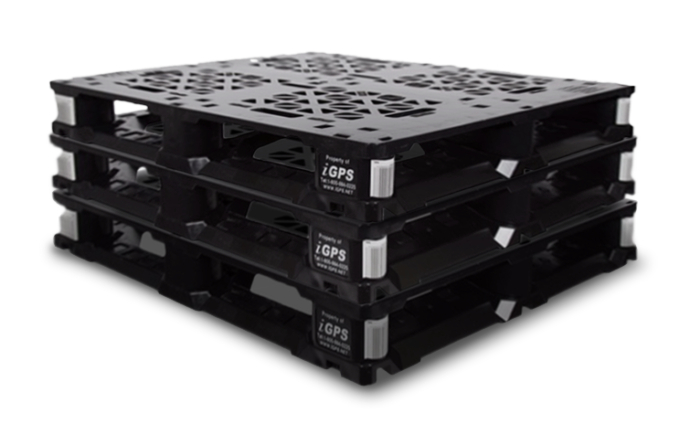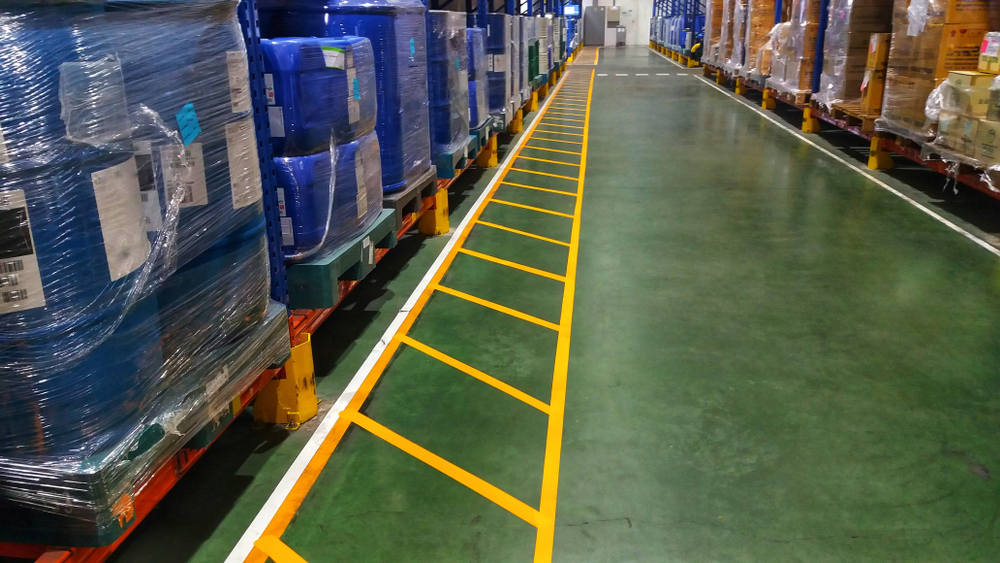Early in Hiroyuki Hirano’s classic sourcebook on 5S methodology in warehouse operations and factories, 5 Pillars of the Visual Workplace, he introduces readers to the “red-tag” strategy for visualizing waste. The enemy, Hirano writes, is waste, and the red-tag strategy provides a visual metric for identifying accumulated waste on the factory and warehouse floors.
As Hirano and a factory superintendent mark unnecessary inventory, equipment, and materials throughout the workplace with red tags, a double image emerges: the efficient, clean workplace defined by its lack of red tags, and the unordered and wasteful space made apparent by the red tags.
As the red-tag strategy indicates, efficiency is the overarching goal for implementations of 5S in the warehouse. Below, we’ll outline the core components of the 5S methodology for warehouse efficiency and examine the role that plastic pallets play.
The Role of 5S in Warehouse Efficiency
While the 5S methodology can generate efficiency gains across industries, it is particularly successful in warehouse operations. Below, each of the “pillars” of 5S are discussed in relation to warehouse implementations.
Five Pillars of the Visual Warehouse
1. Sort
The first of Hirano’s pillars of the visual workplace, the sort step, can be approached as the fundamental element of 5S processes in the warehouse. With a fastidious approach to sorting, managers can gain a true assessment of the waste and excess that permeates the warehouse operation. Since “the enemy is waste,” the red-tag strategy should focus on marking all waste items, or items that contribute to waste, including:
- Unnecessary inventory
- Unused or broken machinery
- Surplus or discarded pallets
Key outcomes: Clarity, optimized space, elimination of obstacles
2. Set
The second pillar concentrates on order and arrangement. Once an operations manager has gained clarity on the space by removing unnecessary materials and eliminating waste from the warehouse floor, the manager can begin to organize the newly cleared space. Some popular implementations during this step include the following:
- Line marking warehouse floors
- Labeling equipment and material locations
- Arranging equipment and materials to align with the workspace
Key outcomes: Improving space management, workspace designation, easy access, tidiness
3. Shine
Focusing on the shine step creates a welcoming and safe atmosphere for workers. Attention to detail and cleanliness ensures that the warehouse offers a safe and inviting environment for your workforce. This essential step in the 5S method can help lower your total supply chain costs by removing the residue and clutter that can lead to accidents, workplace injury, and equipment failure.
Key outcomes: Cleanliness, daily inspections, orderliness, maintenance, workplace pride
4. Standardize
By implementing the first three pillars of the visual workplace, warehouses can experience immediate benefits from waste reduction, thoughtful workspace design, and a meticulous attention to cleanliness. To ensure the warehouse continues to benefit from these efficiency optimizations, processes must be standardized.
- Create a 5S calendar for ongoing Sort, Set, and Shine sessions.
- Determine (and alternate) team members responsible for facilitating sessions.
- Post Sort, Set, and Shine procedures in key workspaces
Key outcomes: Routine, transparency, shared responsibility, clear responsibilities
5. Sustain
While the 5S methodology should exist in objective practices, schedules, and clearly articulated procedures, the methodology should also enter the heart of the workforce. In this way, sustaining is considered a form of self-discipline. When 5S implementations in warehouses succeed in this step, the process has fully taken root and continued efficiency should be the expectation.
- Include the workforce in dialogs to discover efficiency improvements.
- Provide trainings in the warehouse’s 5S implementation.
Key outcomes: Workforce input, knowledge creation, self-motivation
How Pooled Plastic Pallets Complement the 5S Methodology

Once the initial implementation of 5S in warehouses is complete, assessments can be performed to discover available optimizations. Pooled plastic pallets stand out as key innovations for 5S in warehouses. When warehouse operations managers switch from wood block pallets to pooled plastic pallets, each of the 5S pillars is made stronger. Here’s how plastic pallets intersect with each 5S process:
- Sort: Pallet pooling eliminates the need to warehouse empty pallets and reduces waste and unnecessary materials throughout the warehouse.
- Set: Plastic pallets are designed for optimized warehouse storage methods.
- Shine: Plastic pallets provide non-absorbent surfaces that will not splinter and litter the warehouse floor with nails and debris.
- Standardize: Embedded passive RFID tags allow easy tracking for environments that use scanning.
- Sustain: Since plastic pallets are better for the environment than wood pallets, they are more likely to connect with the heart of the workforce and support a commitment to the 5S methodology.
Hiroyuki Hirano’s “red-tag” strategy in 5 Pillars of the Visual Workplace offers a perfect exercise to visualize warehouse waste. Often, warehouse managers recognize mounds of unused or broken wood pallets as the first opportunity to implement 5S methods in the warehouse. By switching to high-quality pooled plastic pallets, managers can optimize their warehouse floor space and prevent accidents while protecting products and machinery from damage.
To learn how iGPS pallets can become a cornerstone for 5S implementations in your warehouse, give our team a call at 1-800-884-0225, email a specialist at switch@igps.net, or visit our contact page.



